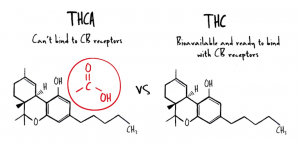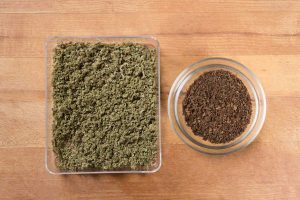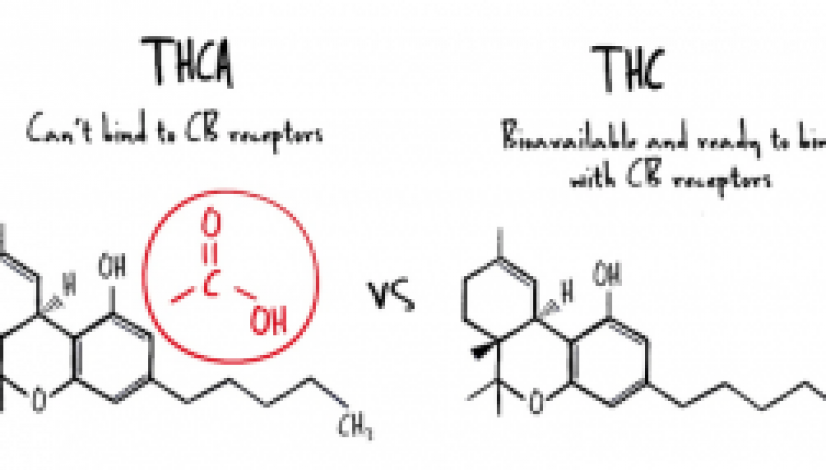How To Decarboxylate Your Cannabis
If you have ever considered making your own cannabis edibles and/or tinctures in order to bypass having to smoke it or perhaps because it is your preferred way of consuming it, you should familiarize yourself with the process of decarboxylating or decarbing your cannabis flower in order to maximize its effects. So, what is decarboxylation exactly? Decarbing is simply a process for removing a carboxyl atom from a specific chemical structure. Specific to cannabis, decarbing refers to the removal of the carboxylic acid, which in turn converts the non-psychoactive cannabinoid, THCA into the psychoactive cannabinoid, THC which is what gets you high.
 While this process does occur naturally over time it can be significantly expedited by placing cured cannabis in the oven prior to cooking with it or infusing it into an oil or alcohol for tinctures. You always want to make sure that you decarb your cannabis before you bake with it to bring out your weed’s psychoactive qualities by toasting your cannabis beforehand in order to ensure that all of THCA gets converted to THC for better results.
While this process does occur naturally over time it can be significantly expedited by placing cured cannabis in the oven prior to cooking with it or infusing it into an oil or alcohol for tinctures. You always want to make sure that you decarb your cannabis before you bake with it to bring out your weed’s psychoactive qualities by toasting your cannabis beforehand in order to ensure that all of THCA gets converted to THC for better results.
While it can seem a little intimidating at first, decarbing your cannabis at home is actually really easy and definitely worth the effort. All you really need to do so is some ground up cannabis bud (quality isn’t really super important), an oven, a baking sheet, and foil or parchment paper. You’ll want to preheat the oven to 240 degrees or alternatively as low as 225 if you want to preserve herb’s terpenes (but you’ll have to toast it longer if you do) and line a baking sheet with parchment paper or foil. Next, spread the cannabis on the baking sheet evenly and place in the oven for about an hour or so.
After the hour has passed your cannabis is now decarboxylated and can be used in numerous different recipes by infusing it into butter, oils, or even alcohol! Please note that cannabinoids are not water soluble so they have to be infused into either a lipid or alcohol if they are to be effectively absorbed into the bloodstream. What infuse your newly decarbed cannabis into really depends on what you are planning on using it for.
 For example, coconut oil is one of the best lipids for cannabis infusion because it tends to retain more of the cannabinoids than other oils and has a relatively high burning point. Coconut oil also contains medium chain triglycerides to help the absorption process and acts as an antioxidant within the body. Alcohol-infused tinctures are ideal for use in liquids or for sublingual absorption whereas oils may be better for baked goods. Now that you know how to decarb your cannabis you no longer no need to spend your hard earned cash on edibles from a dispensary as you will be able to make your very own in the comfort of your home!
For example, coconut oil is one of the best lipids for cannabis infusion because it tends to retain more of the cannabinoids than other oils and has a relatively high burning point. Coconut oil also contains medium chain triglycerides to help the absorption process and acts as an antioxidant within the body. Alcohol-infused tinctures are ideal for use in liquids or for sublingual absorption whereas oils may be better for baked goods. Now that you know how to decarb your cannabis you no longer no need to spend your hard earned cash on edibles from a dispensary as you will be able to make your very own in the comfort of your home!
Have you ever decarbed your own cannabis before? Do you have any tips for decarbing cannabis at home that you’d like to share?
Tags
best temperature for decarboxylationdecarbDecarbingdecarbing weeddecarboxylatedecarboxylationhow to decarb cannabishow to decarb marijuanahow to decarb weedhow to decarboxylatehow to decarboxylate marijuanaTHCTHCAweed news


